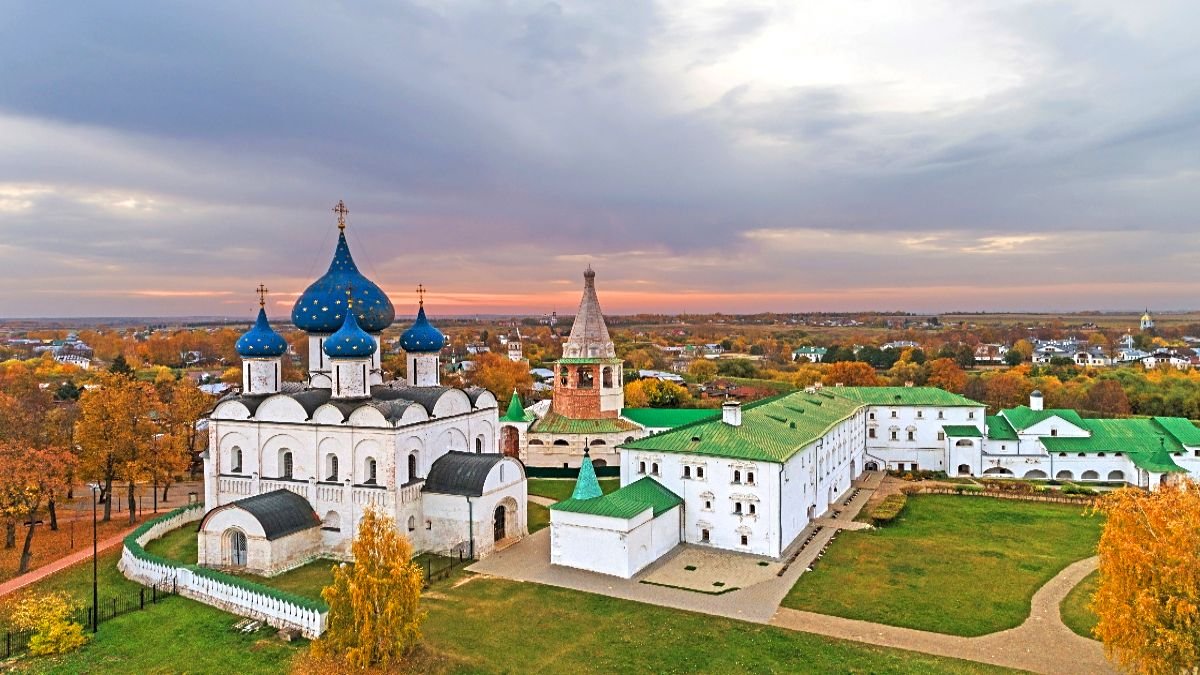Overview:
Russia, the largest country in the world, is a land of contrasts, where modern cities coexist with ancient architecture, and vast landscapes stretch across multiple time zones.
In this blog, we’ll delve into the best 15 tourist attractions in Russia. From its vibrant cities like Moscow and St. Petersburg to the untouched wilderness of Siberia, Russia offers an intriguing mix of history, culture, and natural beauty.
Whether you’re an art enthusiast, a history buff, or a nature lover, Russia has something for everyone.
Table of Contents
1. The Kremlin and Red Square, Moscow

The Kremlin and Red Square are two of the most iconic landmarks in Russia, symbolizing the heart of the nation’s political and cultural life. The fortified complex of the Kremlin is home to palaces, cathedrals, and government buildings.
Historical and Cultural Significance: The Kremlin dates back to the 12th century and has served as the residence of Russian tsars and now the president. Red Square, located just outside the Kremlin walls, has been the setting for numerous historical events, from military parades to political demonstrations.
Unique Features: The colorful domes of St. Basil’s Cathedral, the changing of the guard at the Tomb of the Unknown Soldier, and the majestic Ivan the Great Bell Tower are just a few of the highlights.
Best Time to Visit: April to October (Mild weather for exploring the area).
Travel Tips:
- Transportation: Moscow has an extensive metro system that connects all major attractions. The Kremlin and Red Square are easily accessible by public transport.
- Accommodations: Hotels and guesthouses range from budget to luxury options around central Moscow.
- Local Customs: It’s customary to be quiet and respectful inside churches and government buildings.
2. Hermitage Museum, St. Petersburg
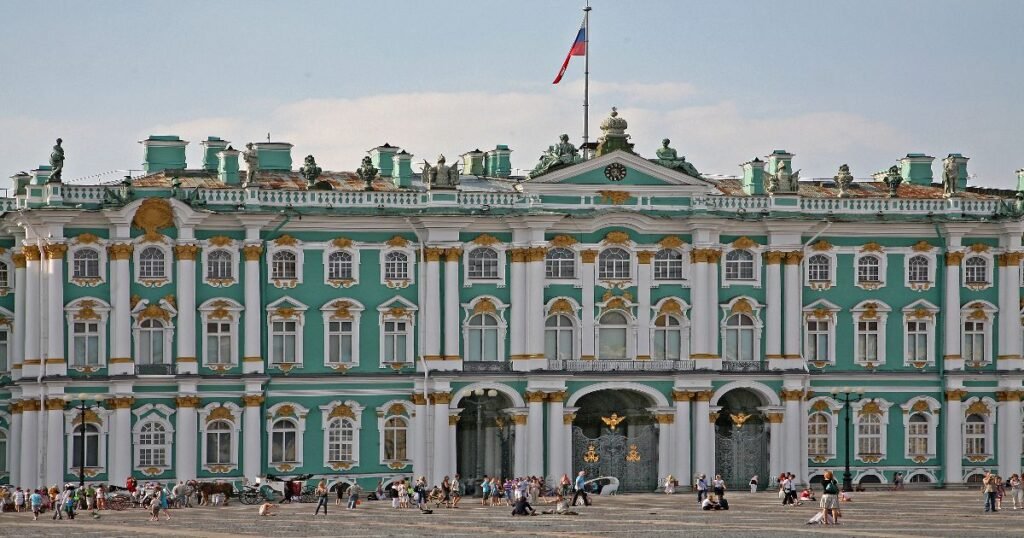
The Hermitage Museum is one of the largest and oldest museums in the world, housed in the stunning Winter Palace in St. Petersburg. It showcases an extensive collection of art and cultural artifacts from around the globe.
Historical and Cultural Significance: Founded by Catherine the Great in 1764, the Hermitage holds over 3 million pieces of art, including works by Leonardo da Vinci, Rembrandt, and Michelangelo. The museum is a testament to Russia’s cultural and artistic heritage.
Unique Features: The museum’s opulent interiors and its collection of European Renaissance art make it a must-visit. The Peacock Clock, a mechanical masterpiece, is one of the museum’s unique exhibits.
Best Time to Visit: May to September (Enjoy St. Petersburg’s White Nights and longer daylight hours)
Travel Tips:
- Transportation: St. Petersburg’s metro and buses make getting to the Hermitage easy. It’s located in the city center.
- Accommodations: There are numerous hotels and hostels nearby to suit all budgets.
- Local Customs: Book your tickets in advance to avoid long lines, especially in summer.
3. Lake Baikal, Siberia
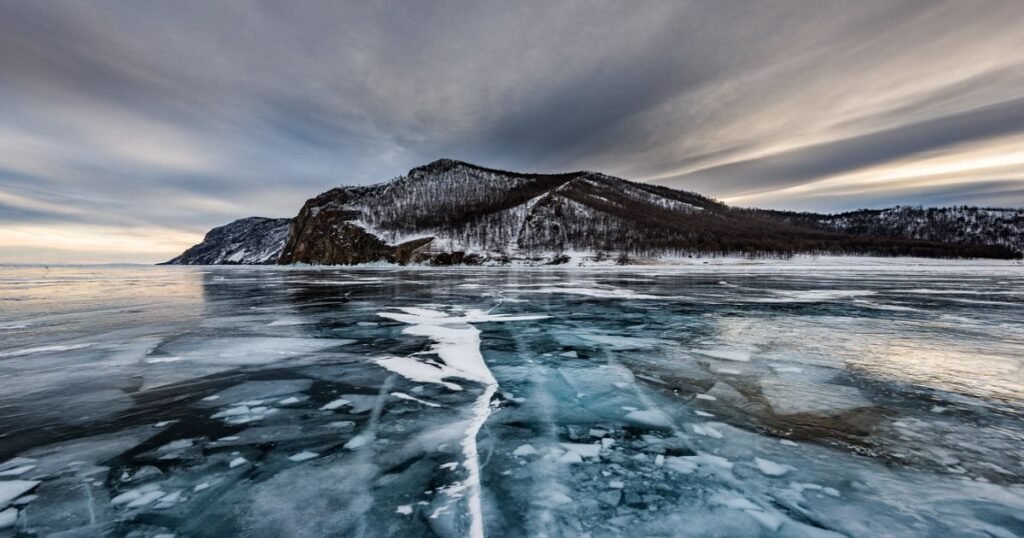
Lake Baikal, the world’s deepest and oldest freshwater lake, is a UNESCO World Heritage Site and one of the most beautiful natural wonders in Russia. It is located in southern Siberia and is often called the “Pearl of Siberia.”
Historical and Cultural Significance: Lake Baikal holds 20% of the world’s unfrozen freshwater and has been revered by indigenous cultures for centuries. The lake is also home to unique wildlife, including the Baikal seal.
Unique Features: In winter, the lake freezes, creating mesmerizing ice formations, while in summer, the crystal-clear water allows for stunning underwater visibility.
Best Time to Visit: February to March (For ice trekking and snow activities), June to September (For hiking and boat tours)
Travel Tips:
- Transportation: Irkutsk and Ulan-Ude are the main gateways to Lake Baikal. From there, you can take buses or ferries to explore the lake.
- Accommodations: Guesthouses, homestays, and eco-lodges are common around the lake.
- Local Customs: Be mindful of local environmental guidelines to preserve the pristine lake ecosystem.
4. Peterhof Palace, St. Petersburg

Known as the “Russian Versailles,” Peterhof Palace is a magnificent imperial estate located just outside St. Petersburg. It is famous for its elaborate gardens, fountains, and opulent architecture.
Historical and Cultural Significance: Commissioned by Peter the Great in the early 18th century, Peterhof was designed to rival the grandeur of European palaces. It has been recognized as a UNESCO World Heritage Site for its cultural and historical importance.
Unique Features: The Grand Cascade, a series of fountains with golden statues, is the centerpiece of the palace grounds. The palace interiors are equally stunning, with gilded halls and lavish decor.
Best Time to Visit: May to September (When the fountains are active)
Travel Tips:
- Transportation: Regular trains and buses from St. Petersburg make it easy to visit Peterhof.
- Accommodations: Stay in central St. Petersburg and take a day trip to the palace.
- Local Customs: Respect the palace grounds by staying on designated paths and being mindful of photography rules inside the palace.
5. Catherine Palace, Tsarskoye Selo
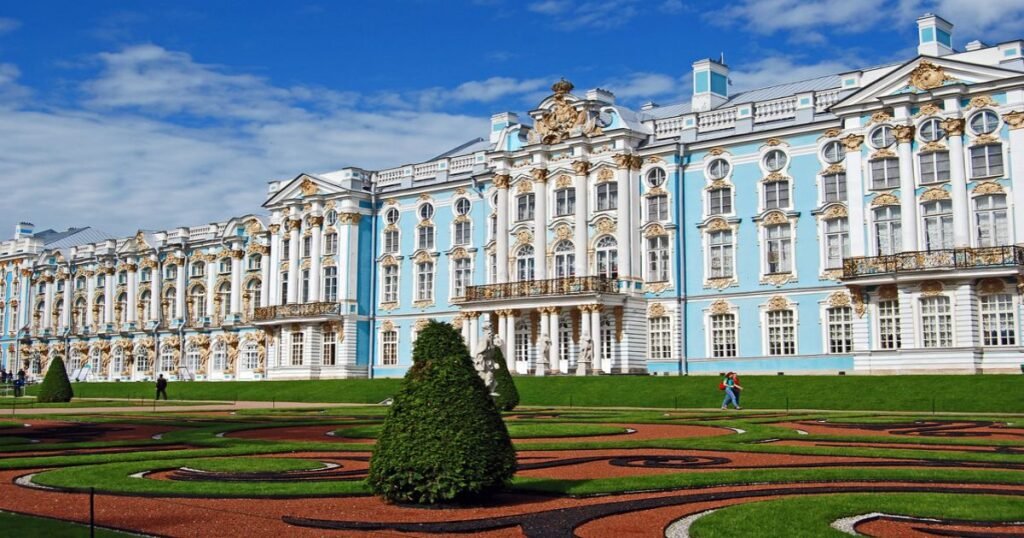
The Catherine Palace, located in Tsarskoye Selo near St. Petersburg, is one of the most stunning examples of Russian Baroque architecture. It served as a summer residence for Russian tsars.
Historical and Cultural Significance: Built in the 18th century, the palace is named after Catherine I, the wife of Peter the Great. The palace is renowned for its elaborate Rococo style and the famed Amber Room, which was reconstructed after WWII.
Unique Features: The Amber Room, often called the “Eighth Wonder of the World,” and the beautifully landscaped gardens make this palace a highlight of any trip to Russia.
Best Time to Visit: May to September (For pleasant weather and fully blooming gardens)
Travel Tips:
- Transportation: Buses and trains from St. Petersburg provide easy access to Tsarskoye Selo.
- Accommodations: Central St. Petersburg is the best base for visiting Catherine Palace.
- Local Customs: Photography is restricted inside certain rooms, so always ask for permission before taking pictures.
6. The Golden Ring Towns
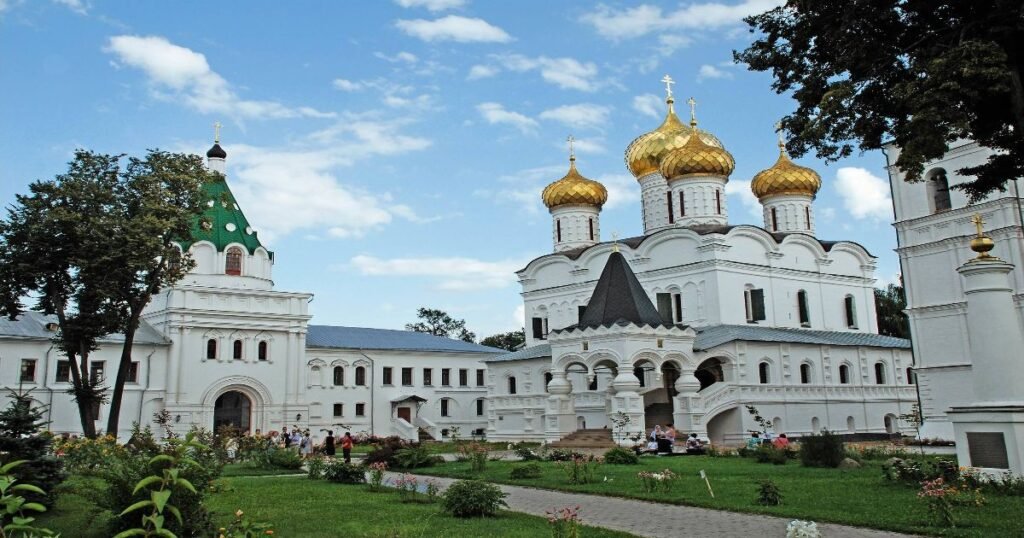
The Golden Ring is a group of historic cities northeast of Moscow, known for their well-preserved medieval architecture, including onion-domed churches and kremlins.
Historical and Cultural Significance: The towns of Vladimir, Suzdal, and Sergiev Posad, among others, offer a glimpse into Russia’s rich history. These towns played a crucial role in the development of Russian art, culture, and religion.
Unique Features: The onion-domed churches, wooden architecture, and serene monasteries make the Golden Ring a photographer’s paradise.
Best Time to Visit: May to September (Best for sightseeing and walking tours)
Travel Tips:
- Transportation: You can reach these towns by train or bus from Moscow. Some travelers prefer organized tours.
- Accommodations: Most Golden Ring towns offer small hotels and guesthouses.
- Local Customs: When visiting churches, women should cover their heads, and modest dress is recommended.
7. Kizhi Island, Karelia
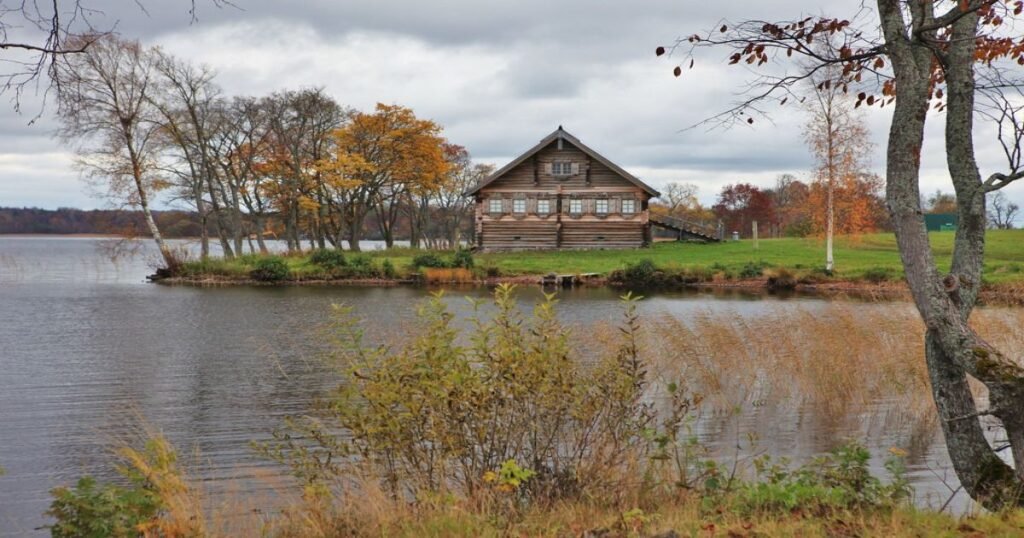
Kizhi Island, located in Lake Onega in the Karelia region, is famous for its open-air museum of wooden architecture. The island is home to some of Russia’s most significant wooden churches and buildings.
Historical and Cultural Significance: The Transfiguration Church, with its 22 domes, is a UNESCO World Heritage Site and an excellent example of Russian wooden architecture. The island has been inhabited since the 15th century and reflects the traditions of Russian rural life.
Unique Features: The island’s structures are built entirely without nails, showcasing incredible craftsmanship. The wooden churches and windmills create a timeless and picturesque landscape.
Best Time to Visit: June to August (Best weather for outdoor exploration)
Travel Tips:
- Transportation: Boats and ferries operate from Petrozavodsk, the capital of Karelia, to Kizhi Island.
- Accommodations: Stay in Petrozavodsk, as there are limited accommodations on the island.
- Local Customs: Kizhi Island is a peaceful, remote location, so respect the quiet atmosphere and traditional way of life.
8. Trans-Siberian Railway

The Trans-Siberian Railway is the longest railway line in the world, stretching from Moscow to Vladivostok. It’s a must-do adventure for travelers looking to experience Russia’s vast landscapes.
Historical and Cultural Significance: Completed in 1916, the Trans-Siberian Railway is an engineering marvel, connecting Europe to Asia across eight time zones. The railway has played a crucial role in Russia’s economic development, transporting goods and people over thousands of miles.
Unique Features: The journey allows travelers to witness Russia’s diverse landscapes, from the rolling hills of European Russia to the vast forests of Siberia and the mountainous regions near Vladivostok. Stops in cities like Novosibirsk, Irkutsk, and Ulan-Ude offer insights into regional culture and history.
Best Time to Visit: May to September (Comfortable temperatures and clear weather)
Travel Tips:
- Transportation: The journey can be completed in one week, but most travelers break it up into segments to explore cities along the route.
- Accommodations: On the train, there are different classes of cabins, from basic to luxury. In cities along the route, hotels and hostels are available.
- Local Customs: Pack warm clothing even in summer, as Siberian nights can be chilly. Learn a few basic Russian phrases to communicate with locals during your stops.
9. Sochi and the Caucasus Mountains
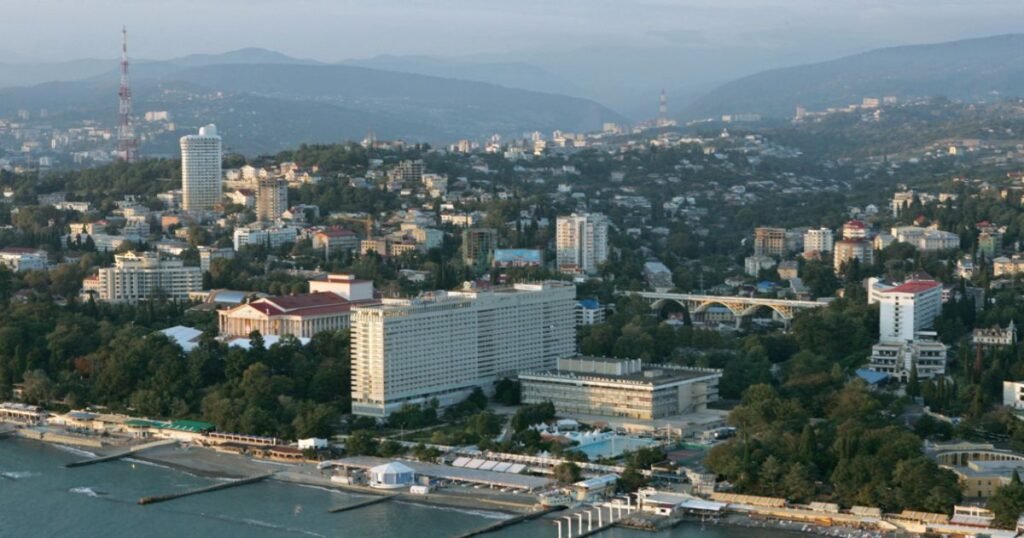
Sochi, a resort city on the Black Sea coast, gained international fame as the host of the 2014 Winter Olympics. It offers a unique combination of subtropical beaches and the rugged Caucasus Mountains, making it a popular year-round destination.
Historical and Cultural Significance: Sochi has been a favorite vacation spot for Russians since the Soviet era. Its blend of modern infrastructure and natural beauty makes it a top destination for both beach lovers and adventure seekers.
Unique Features: In winter, Sochi’s Krasnaya Polyana resort is a hub for skiing and snowboarding. In summer, visitors enjoy hiking, mountain biking, and relaxing on the Black Sea beaches.
Best Time to Visit:
- Winter Sports: December to March
- Beach Season: May to September
Travel Tips:
- Transportation: Sochi has its own airport, with frequent domestic and international flights. Local buses and taxis make getting around the city easy.
- Accommodations: Sochi offers a wide range of accommodations, from budget hostels to luxurious beachfront hotels.
- Local Customs: Tipping is appreciated in restaurants. Be prepared for busy tourist crowds during the summer months.
10. Volga River and Volgograd
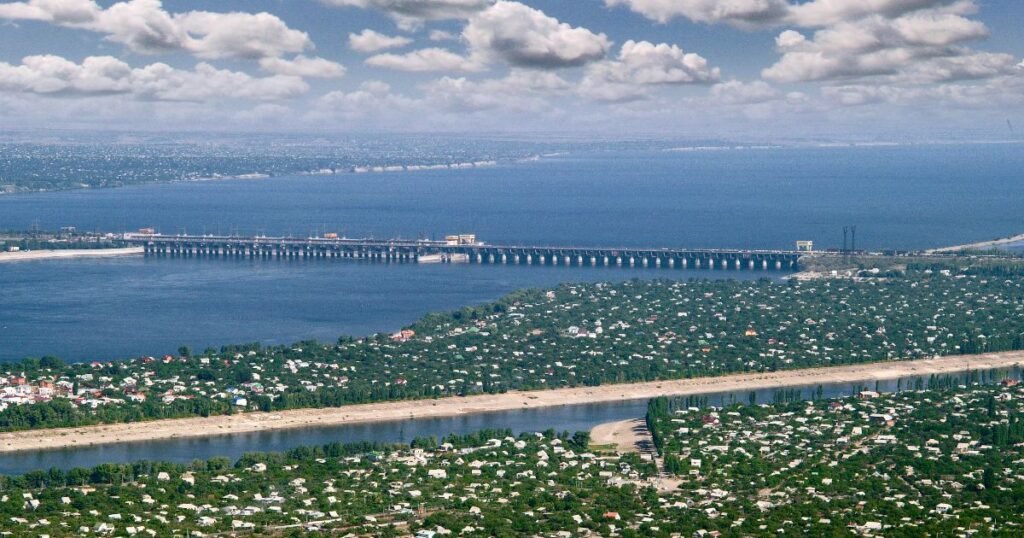
The Volga River, Europe’s longest river, is the lifeblood of Russia, flowing through major cities like Volgograd. Volgograd, formerly known as Stalingrad, is famous for its pivotal role in World War II and its towering Motherland Calls statue.
Historical and Cultural Significance: The Battle of Stalingrad was one of the deadliest in history, and today, Volgograd stands as a symbol of Russian resilience. The city’s museums and memorials offer a sobering look at the sacrifices made during the war.
Unique Features: The panoramic views from the Mamayev Kurgan hill, where the Motherland Calls statue is located, are awe-inspiring. The river cruises on the Volga offer a peaceful way to explore the region’s beauty.
Best Time to Visit: May to September (Pleasant weather for outdoor activities)
Travel Tips:
- Transportation: Volgograd is well-connected by train, air, and river cruises. Buses and trams make getting around the city convenient.
- Accommodations: Hotels near the city center and along the river cater to a range of budgets.
- Local Customs: Visit war memorials with respect and observe moments of silence where requested.
11. Mount Elbrus, Caucasus Region

Mount Elbrus, located in the Caucasus Mountains, is the highest peak in Europe and one of the Seven Summits, making it a top destination for mountaineers and adventure travelers.
Historical and Cultural Significance: While Mount Elbrus is primarily known for its mountaineering challenges, the surrounding region is steeped in cultural history, with local ethnic groups preserving their ancient traditions.
Unique Features: The mountain offers hiking, skiing, and snowboarding opportunities. Climbing to the summit is a challenging but rewarding experience, offering breathtaking views of the surrounding peaks.
Best Time to Visit:
- Climbing: June to September
- Skiing/Snowboarding: December to March
Travel Tips:
- Transportation: The nearest airport is in Mineralnye Vody, from where buses or private transfers can take you to the mountain base.
- Accommodations: Small guesthouses and ski lodges are available in the region.
- Local Customs: Respect local customs by dressing modestly and learning about the traditions of the local ethnic groups.
12. Novgorod the Great
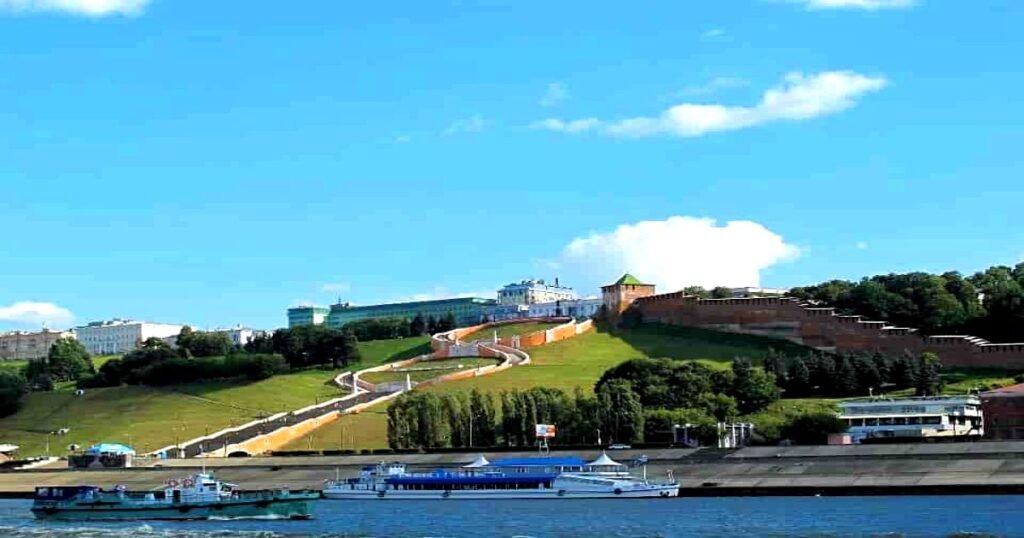
Novgorod, one of Russia’s oldest cities, is often referred to as the birthplace of Russian civilization. Located between Moscow and St. Petersburg, it boasts a rich collection of medieval architecture, including the Novgorod Kremlin.
Historical and Cultural Significance: Founded in the 9th century, Novgorod was a major political and cultural center during the medieval period. Its well-preserved churches and monuments offer a glimpse into Russia’s early history.
Unique Features: The city’s most notable attraction is St. Sophia’s Cathedral, one of the oldest churches in Russia. The Detinets (Novgorod Kremlin) and the Millennium of Russia monument are also must-sees.
Best Time to Visit: May to September (For pleasant weather and outdoor activities)
Travel Tips:
- Transportation: Novgorod is easily accessible by train from both Moscow and St. Petersburg.
- Accommodations: The city offers a variety of mid-range hotels and guesthouses.
- Local Customs: When visiting religious sites, modest clothing is required, and women should cover their heads.
13. Kamchatka Peninsula
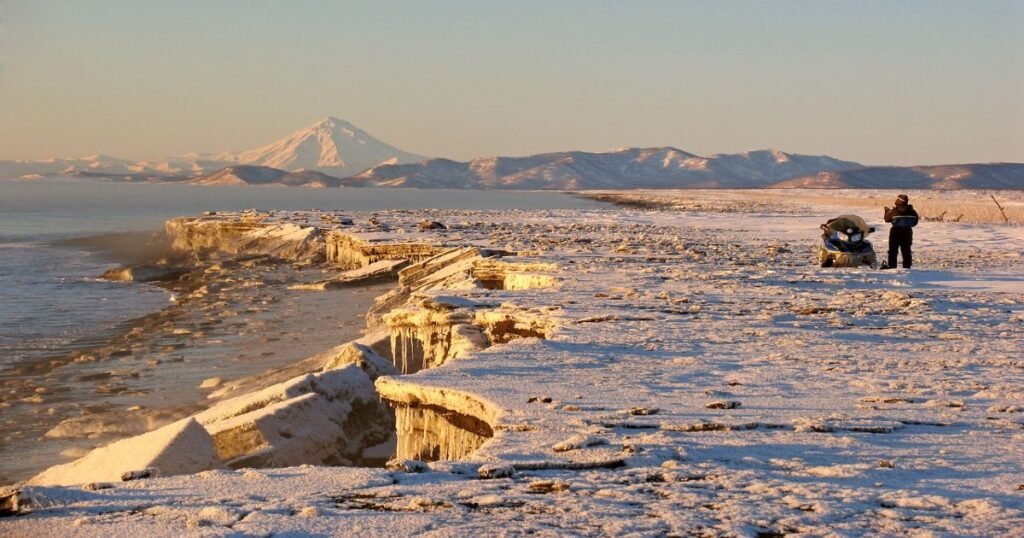
The Kamchatka Peninsula is a remote and wild region in Russia’s Far East, known for its dramatic volcanic landscapes, geysers, and diverse wildlife. It’s a paradise for adventure travelers and nature enthusiasts.
Historical and Cultural Significance: Kamchatka has been inhabited by indigenous peoples for thousands of years, and today, visitors can learn about their traditional ways of life while exploring the region’s untouched wilderness.
Unique Features: The Valley of Geysers, an area with numerous hot springs and geysers, and the active Klyuchevskaya Sopka volcano are major attractions. The region is also home to brown bears, sea otters, and whales.
Best Time to Visit:
- Hiking and Wildlife Viewing: June to September
- Winter Sports: December to March
Travel Tips:
- Transportation: Kamchatka is accessible only by air, with flights from Moscow to Petropavlovsk-Kamchatsky, the region’s main city.
- Accommodations: Eco-lodges and small hotels cater to adventure tourists.
- Local Customs: Be aware of safety guidelines when hiking in bear territory and always respect the natural environment.
14. Suzdal
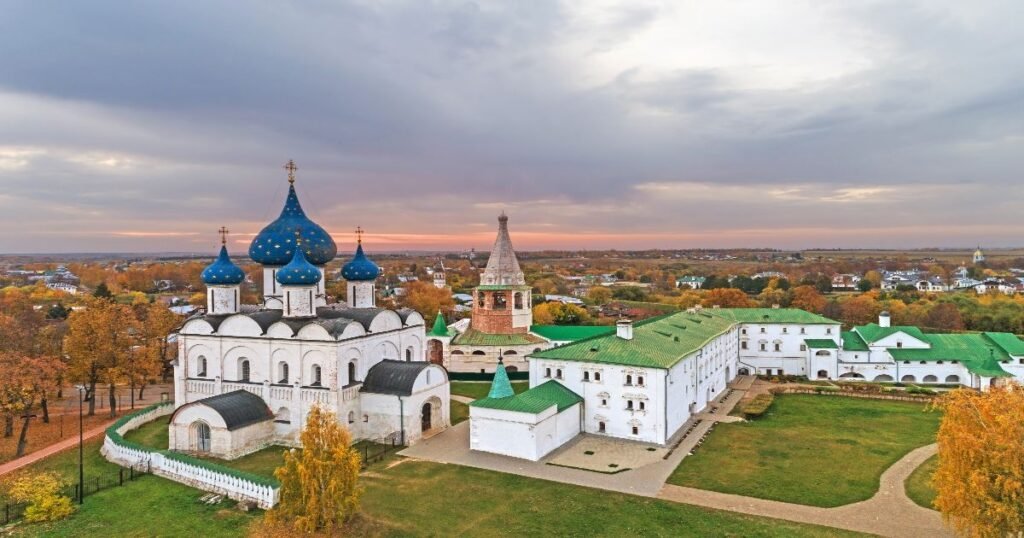
Suzdal is a small town that seems frozen in time, with its whitewashed churches and wooden houses. It’s part of Russia’s Golden Ring and offers a glimpse into rural Russian life.
Historical and Cultural Significance: Suzdal’s history dates back over a thousand years, and it was once the capital of a powerful principality. Today, the town is a living museum of medieval Russian architecture and culture.
Unique Features: The Kremlin of Suzdal and the Church of the Nativity are two of the town’s most famous landmarks. Horse-drawn carriage rides through the countryside provide a tranquil escape from the hustle and bustle of modern cities.
Best Time to Visit: May to September (Best for exploring the town’s open-air museum)
Travel Tips:
- Transportation: Suzdal is accessible by bus or car from Moscow.
- Accommodations: Guesthouses and boutique hotels in traditional Russian style are popular choices.
- Local Customs: Suzdal is a religious town, so be mindful of proper behavior when visiting churches and monasteries.
15. Yekaterinburg
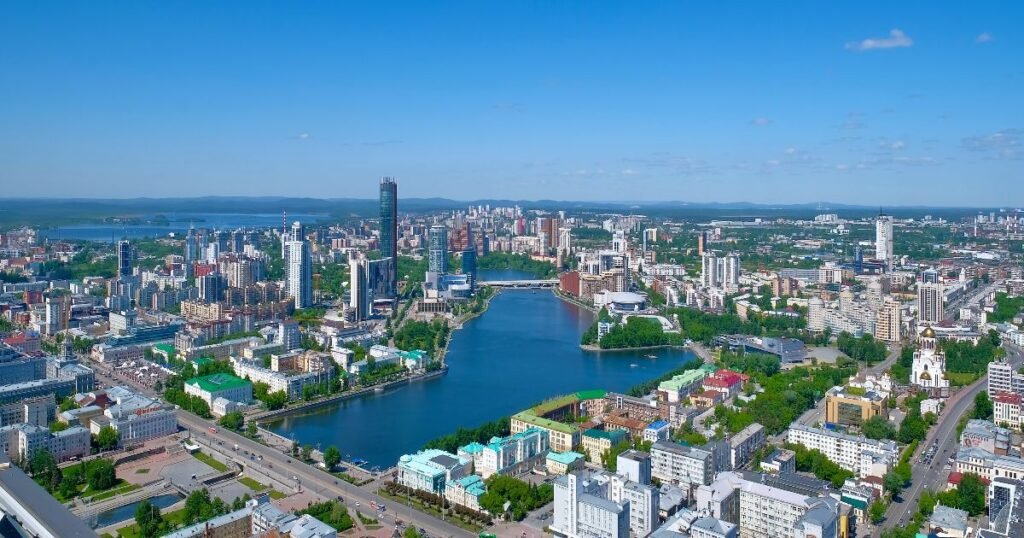
Yekaterinburg, located in the Ural Mountains, is Russia’s fourth-largest city and the gateway to both Europe and Asia. It is known for its mix of historical sites and modern urban culture.
Historical and Cultural Significance: The city is infamous for being the site where the Romanov family, Russia’s last tsars, were executed in 1918. Today, the Church on the Blood stands as a memorial to this tragic event.
Unique Features: The Church on the Blood, built on the site of the Romanov family’s execution, is a somber reminder of Russia’s turbulent history. Yekaterinburg is also known for its vibrant arts scene, with numerous theaters, galleries, and museums. The nearby Ural Mountains offer opportunities for outdoor activities like hiking and skiing.
Best Time to Visit:
- Cultural Exploration: May to September
- Winter Sports: December to February
Travel Tips:
- Transportation: Yekaterinburg is well-connected by air and rail, with frequent flights and trains from Moscow and other major cities. The city also has an efficient public transportation system, including buses, trams, and a metro.
- Accommodations: From luxury hotels to budget-friendly hostels, Yekaterinburg offers accommodations to suit every traveler.
- Local Customs: When visiting religious sites like the Church on the Blood, dress modestly and be respectful of the site’s historical significance.
Also Read: Top 10 Adventure Destinations In Mexico
Conclusion
Russia is a country of staggering diversity both in its landscapes and its cultural heritage.
From the iconic landmarks of Moscow and St. Petersburg to the rugged wilderness of Siberia and the Caucasus, Russia offers something for every type of traveler.
Whether you’re exploring ancient cities, taking a scenic train ride, or hiking the highest peaks, Russia’s rich history and breathtaking natural beauty make it an unforgettable destination.
By following essential travel tips for transportation, accommodations, and local customs, your journey through Russia will be a smooth and enriching experience.
FAQs
1. What is the best time of year to visit Russia?
The best time to visit depends on the region. Generally, May to September offers pleasant weather for exploring cities and nature, while December to March is ideal for winter sports in places like Sochi and the Ural Mountains.
2. Do I need a visa to visit Russia?
Yes, most travelers will need a visa to enter Russia. It’s essential to check the visa requirements for your specific country and apply well in advance of your trip.
3. Is Russia safe for tourists?
Russia is generally safe for tourists, but as with any travel destination, it’s important to take precautions. Be aware of your surroundings, especially in crowded areas, and follow local safety advice. In remote areas, particularly in wilderness regions like Kamchatka, it’s important to follow safety guidelines and travel with a guide.
4. How do I get around in Russia?
Russia has an extensive public transportation system, including buses, trams, and metros in major cities. Long-distance travel is often done by train, particularly the famous Trans-Siberian Railway. Domestic flights are also a convenient option for covering large distances.
5. What are the accommodations like in Russia?
Russia offers a wide range of accommodations, from luxury hotels in big cities like Moscow and St. Petersburg to budget-friendly hostels and guesthouses in smaller towns and rural areas. In popular tourist areas, it’s advisable to book your accommodations in advance, especially during peak travel seasons.
6. What local customs should I be aware of in Russia?
When visiting religious sites, dress modestly and be respectful of local customs. Learning a few basic Russian phrases can be helpful, as English is not widely spoken outside of major cities. Additionally, be mindful of tipping in restaurants (typically 10-15%) and always ask permission before photographing locals or religious icons.

